My layout is not focused on modelling some original layout or epoch - my
focus are the signals. So you can expect some unusual combinations that allow me
to play around with signal aspects. Some peculiar things which you may not find
often are East German Hl signals, a signal for a spring-loaded point, and there
is even a Chinese locomotive and coaches.
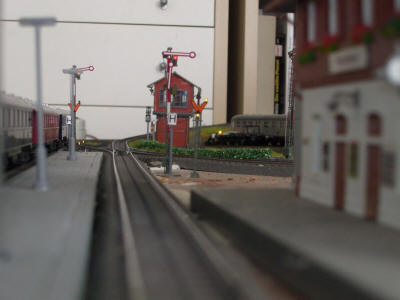 |
This is a view of my station. On the right track, we see the exit
signal displaying Hp 0-stop. To the right of the exit signal we see a
Ra 11 "W" board which instructs shunting movements to stop and stay
until a proceed order is given by a Ra 12 signal, which is the two white
lights at the W board. So the indication we see here means stop for
trains, proceed for shunting.
We also see a
Ne 5 "H" board instructing
trains calling at the station to stop here. Farther in the background
there is another "H" board with an additional board displaying a "6".
"H" boards are usually black on white but may be white on black, though
you won't see both variants in the same place. The meaning here is that
the head of trains with six coaches should stop here. Obviously that
place is beyond the exit signal which is due to space here, but you will
never see this in reality. To allow a train to proceed beyond the exit
signal I use the "W" board with the shunting proceed order, which is
also not possible in the prototype. |
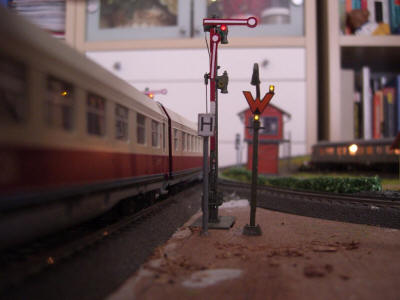 |
Closeup of the same situation. In the meantime the train has pulled
into the station, passing the exit signal as shunting movement and
halting at the black "H" board in the background. |
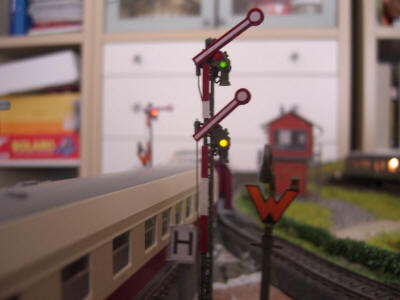 |
Now the exit signal displays
Hp 2 - proceed slow as the train is
leaving the station. |
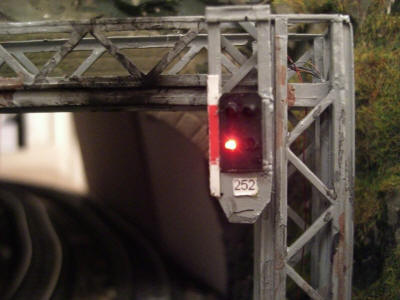 |
Closeup of an East German Hl signal displaying Hp 0 - stop. This head can also
display a green light (Hl 1 - clear). It is also equipped with an
emergency red and also an amber lantern, which is not used here. The
reason is that an amber would mean Hl 10 - clear, expect stop, but the
white-red-white post plate tells us that this one is a main signal bit
doesn't serve as distant signal for the signal in advance, so its amber
lantern is never used. |
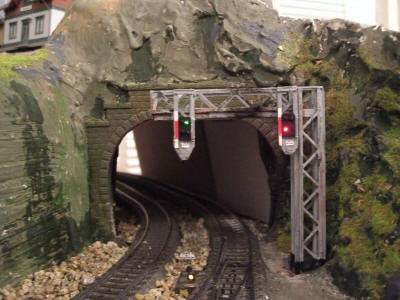 |
This combination tells us that a train will exit the station (which
is behind the camera) on the wrong track; the left Hl signal displays
Hl 1 - clear while the signal for the right track displays Hp 0 - stop. |
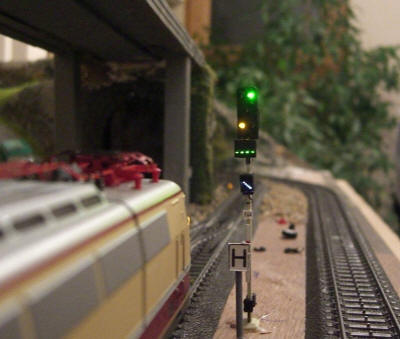 |
This is the station exit signal: It displays aspect Hl 2 (clear with
100 km/h, expect clear). Below we see a
Zs 6 (counter line indicator),
and in front of the signal there is a
Ne 5 "H" board. |
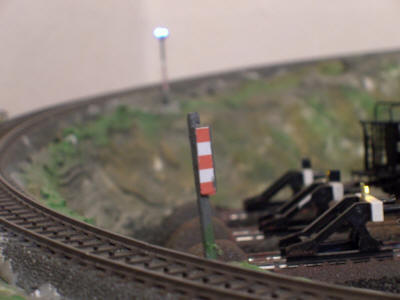 |
The red-white board is an Ne 12 (before called
So 17) which
tells the driver that he must check which aspect the following
supervision signal for spring-loaded points is showing. |
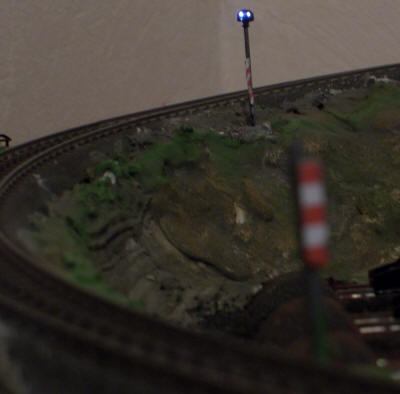 |
This is a supervision signal for spring-loaded points. The aspects
have changed recently, this one is the old version So 18. It
displays two white lights (aspect So 18a) which mean that the point can
be travelled facing. The new aspect has just one white light above an
orange bar and is called Ne 13a. |
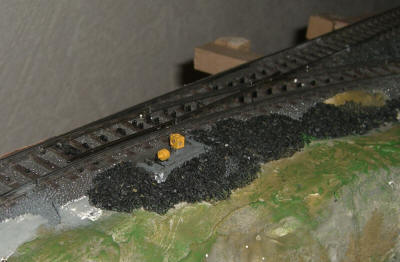 |
A point signal showing Wn 2 - deflection. Usually the point signals
are black, but this one is coloured orange which tells us that this is a
spring-loaded point. |
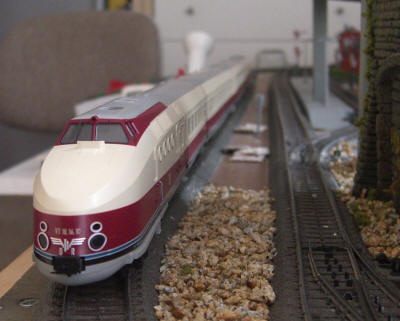 |
Of course, I do not only have signals, there are also trains. This
one is a VT 175, East Germany's version of the TEE. One of the most
beautiful trains which ever travelled on German rails. |
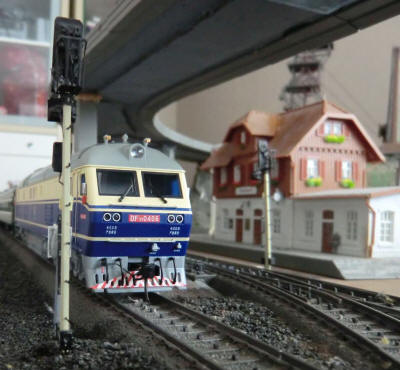 |
A Silk Road train has arrived in Germany; this is a DF
11 loco of the Chinese Railways. DF stands for 东风 (dōngfēng) which means
East Wind. |
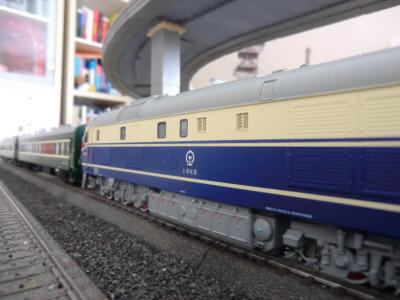 |
DF11-0406 pulls two YZ22 coaches. YZ stands for
硬座车 (Yìngzuò chē) which means hard
seater.
Beneath the China Railways logo there the characters 上局杭段
(shàng jú háng duàn) tells us that this DF11 belongs to
the Hangzhou Railway Bureau. |
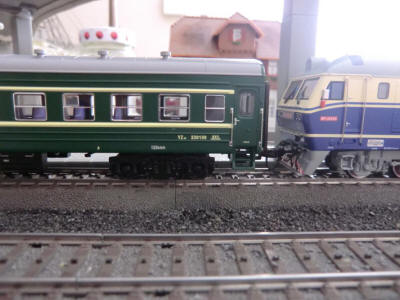 |
Another view of my DF11 pulling YZ22 coaches. |
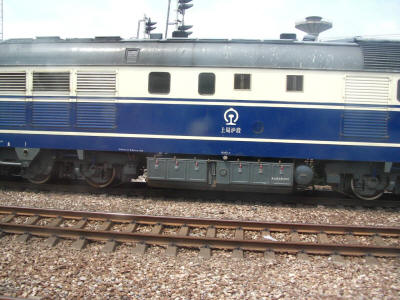 |
This picture is not of my layout, it is a DF11 in real
life. The characters 上局沪段 (shàng jú hù duàn) beneath the logo tell us that this loco belongs to the
Shanghai Railway Bureau. (As the two-syllables of Shànghǎi are too long
for our Chinese friends, they invented a one-syllable abbreviation,
which is Hù). |














 home
home model
railway
model
railway email
email signals
signals